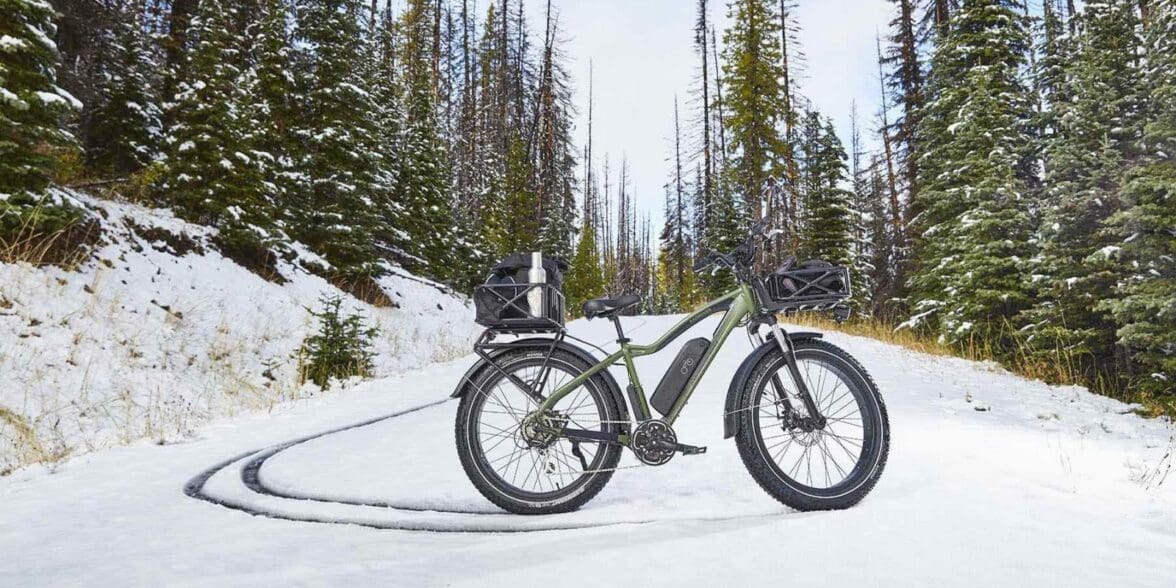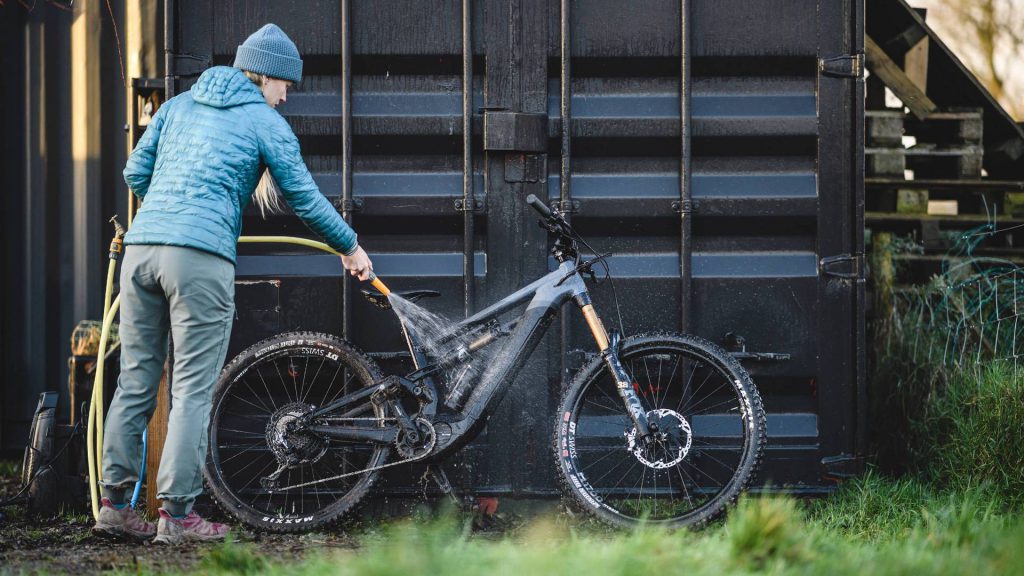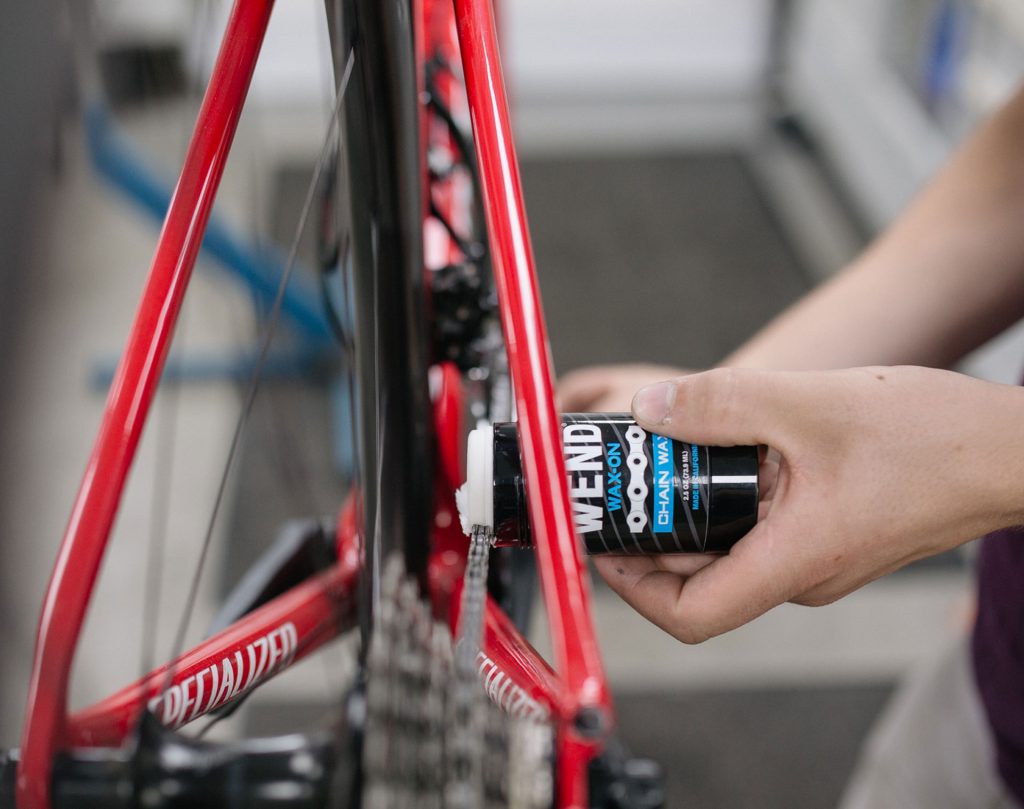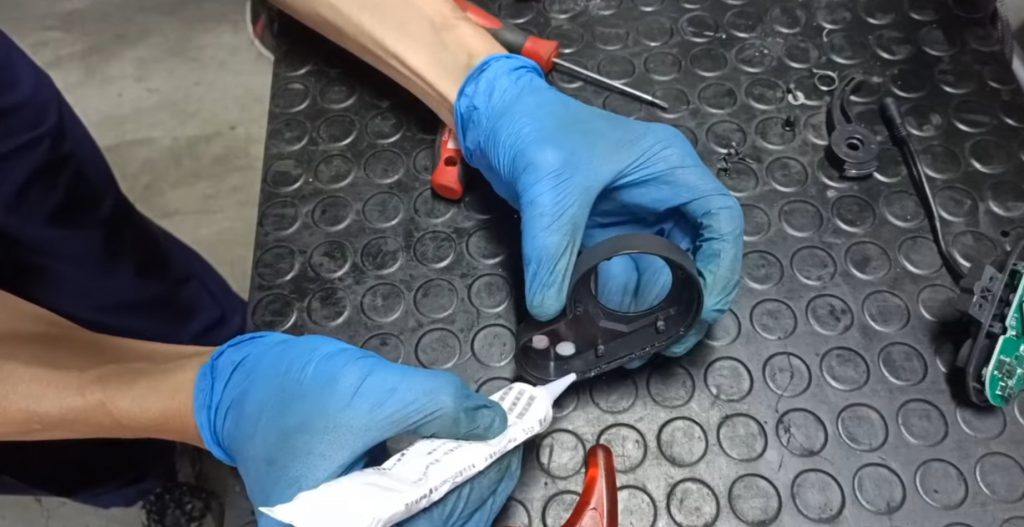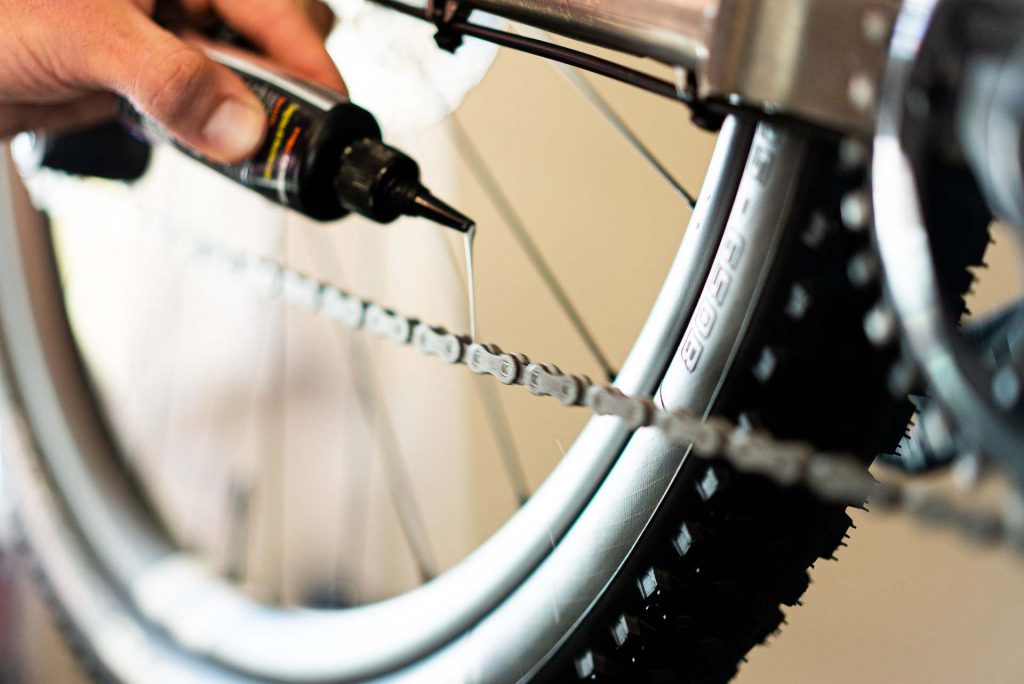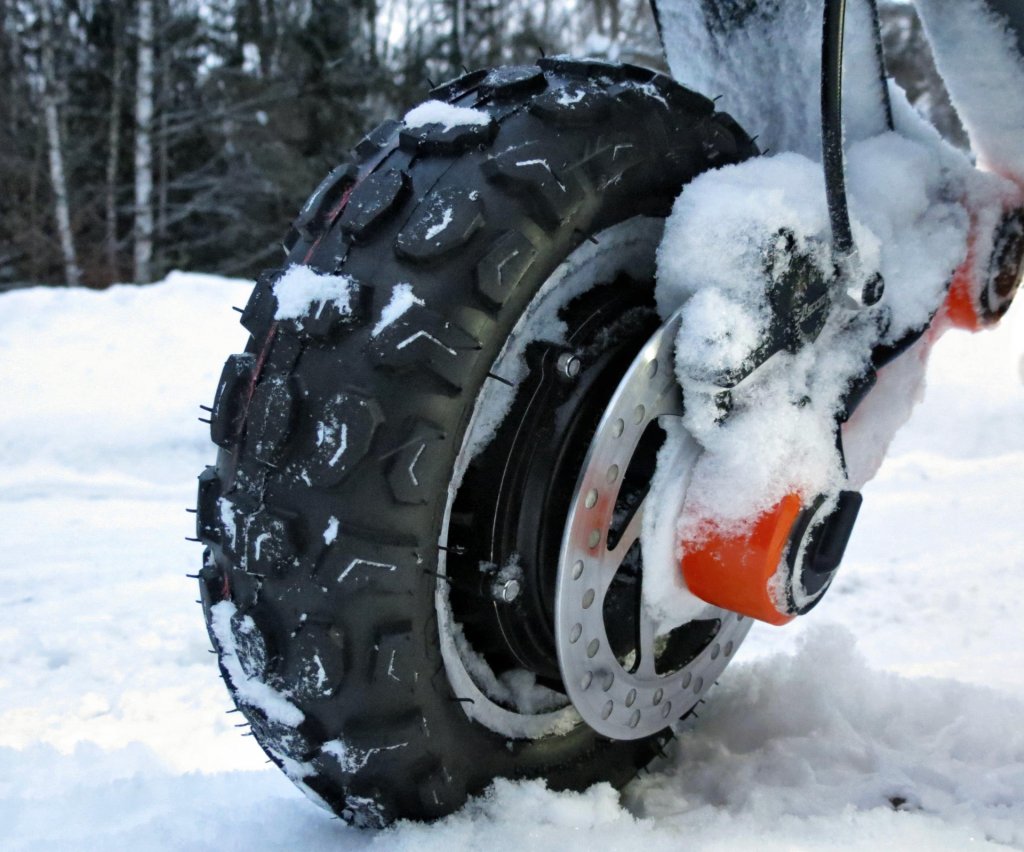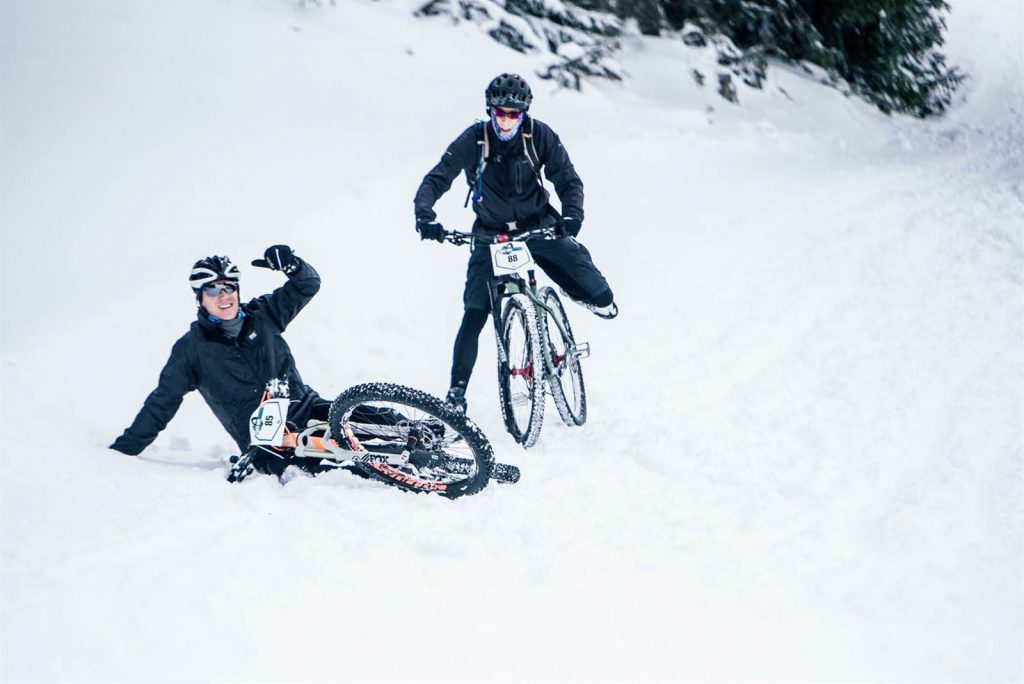Exposure to relentless freezing temperatures and moisture is the downfall of many precious PEVs every year. Excitement or contentment can easily take hold of riders during the holiday season—who in turn, unknowingly neglect their PEV by failing to take the right protective measures.
Those who take correct care of their PEV will find countless hours of enjoyment and a reliable ride. Nobody wants to wonder why their new eBike broke after only a year of use, so it’s important to know how to winterise your PEV. Here are our top tips for keeping your eBike, eScooter or eBoard running optimally in the cold and snowy conditions of winter:
General Tips for Winterising Your PEV
Before we start on specific vehicles like eBikes or eScooters, we will first highlight some essential basics for winterising most PEVs. This includes paintwork and component protection, which tires to use, proper storage, and more (surprisingly, salt remains one of the biggest culprits in terms of causing damage).
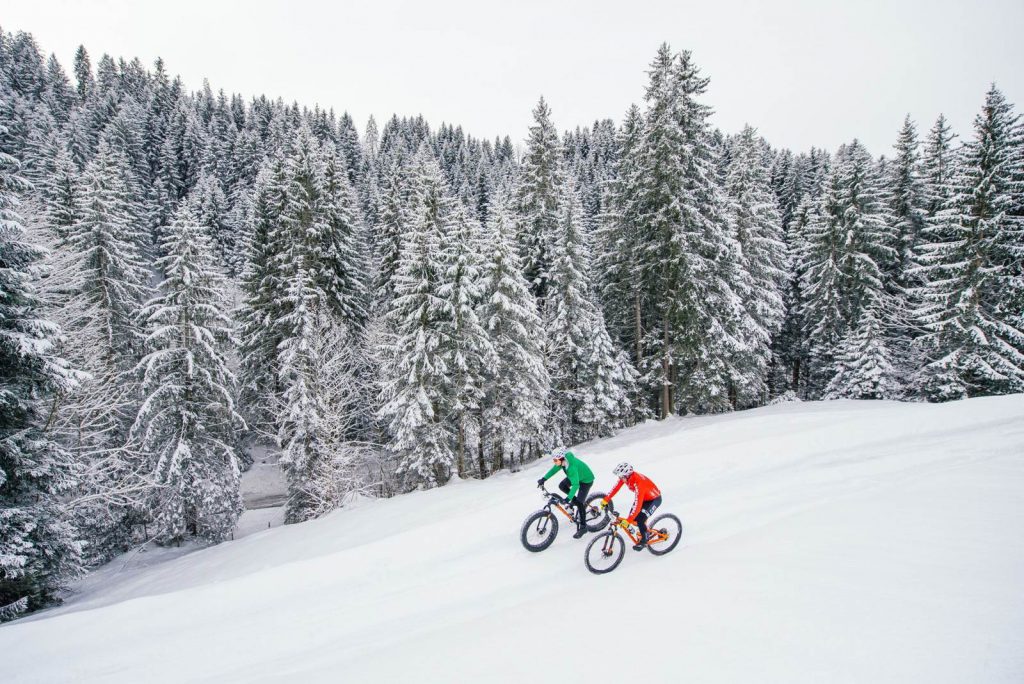
Keep Your PEV Safe from Salt & Snow
Possibly one of the most significant factors in protecting your PEV for winter or when riding through the snow, salt remains an effective and unexpected killer of both frames and electrical components. Snow is very likely to contain dirt, sand, salt and other chemicals such as magnesium chloride.
Saltwater is also dangerous; it’s especially conductive and accelerates corrosion damage. It will also cause major damage if any finds its way inside your frame or comes into contact with any components (which can easily cause a short-circuit and fry the electricals). To avoid this, we recommend any of the following options:
- Additional waterproofing/sealing
Remember, the controls used in PEVs often possess little-to-no water resistance. If riding in wet weather, we recommend applying silicone gel/grease in between gaps, connectors and screw holes. Apply further silicone to any joints and gaps on the display, or remove the display altogether. Put a plastic bag over the throttle if required.
Using this gel for waterproofing electricals will work for most components, but requires patience and leaves little room for error. Those interested in this will benefit from watching this YouTube video on the process.
- Use a frame cover
This makes a highly affordable and instant way of protecting the frame and paintwork of your ride. However, these frame covers usually only partially protect your PEV and are only commonly available for eBikes.
- Wash before/after use
Regular washing is surprisingly effective in combating rust and corrosion, whilst also protecting electrical components from exposure. Your PEV must be adequately protected against silt, snow and saltwater, with enough water resistance to safely rinse off. This may prove a pain during sub-zero temperatures, where garden hoses and faucets freeze.
-
Via canyon.com Safe, suitable storage
Although an obvious point on our list, it’s also one of the most important. Storing your PEV correctly will result in a much longer lifespan and protect against electrical faults. In general, electricals don’t function well in extreme temperatures. However, a cold battery is especially prone to damage and malfunction if put under strain.
Whilst we recommend keeping the whole PEV inside, this is not always an option. As such, we advise storing your battery separately in a warm location if possible. If you must store your PEV outside, ensure that it rests in a sheltered and roofed area. We also recommend investing in a heavy-duty cover for added protection.
If inside storage isn’t an option, make sure you also learn how to protect your PEV from theft!
Protect the Paintwork
Taking the extra steps to protect your paintwork not only keeps your ride looking great but also helps safeguard certain electrical components. This applies to most PEV models, with the extra effort practically paying for itself after just one winter. The paintwork of your frame is the first shield against rust and corrosion, whilst also helping to seal off internal electricals from water exposure.
This is especially important on electric bikes, where the painted frame commonly comes into contact much more with riders. Here are a few of our preferred methods of keeping your paintwork on point:
-
Via sigmasports.com Use protective tape
Taping your frame is a surprisingly efficient and highly cost-effective method of protecting both your paintwork and electrical components. If done correctly, this will also offer an additional level of water resistance; further defending against damage from snow and saltwater. Riders have a number of choices, from clear and vinyl tape to a complete ‘’frame protection tape kit‘.
- Wax down & spray the frame
An often overlooked step, waxing down your eBike or eScooter helps keep it clean and stops snow from sticking to it. In some cases, even regular furniture polish proves suitable in times when you only need an extra layer. There is a huge host of options available to pick, although we recommend using either ‘303 Aerospace Protectant’ or ‘ACF-50’ for the best results.
How to Winterise an eBike
Every year, many riders wave goodbye to their eBikes until the weather warms up. However, some either don’t have the option or enjoy the challenge of riding through the winter. As such, this section will cover our tips and tricks for keeping an eBike running in the cold.
First off, we heavily recommend purchasing a model with ‘IP54’ waterproofing (at a minimum). Although additional waterproofing and sealing measures may be required, this offers superb starting protection from the elements.
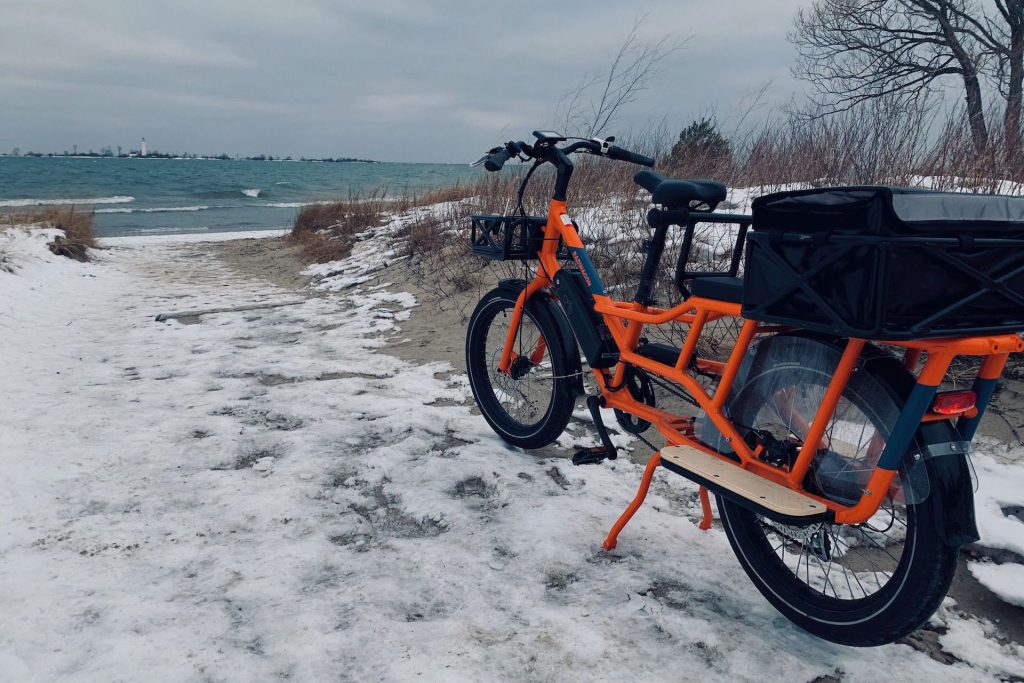
Much of our advice under the ‘general tips’ section is relevant to all PEVs, including eBikes. Tightening brakes and other standard checks make a good start, but that’s just the tip of the iceberg (pun intended). So, here are some of our top methods specific to winterising an eBike:
- Cover or remove certain components:
Many models do not feature adequate waterproofing on components such as the controller. Whilst this is no issue on a mild day or during a light drizzle, it proves a real problem during heavy conditions. As mentioned previously, applying silicone gel/caulk between gaps and screw holes in the controller adds a reliable layer of protection.
Alternatively, we recommend removing such components before use, if you know the weather is going to be severe. Placing a plastic bag over components that cannot be removed or sealed (such as the throttle) works well enough as a cheap and basic layer of protection.
-
Via YouTube.com Lubricate the chain
Although some eBikes do not feature a chain, many mid-drive models and even some hub-drive city eBikes continue to sport one. After a few intensive sessions, this chain can get dirty or greasy, reducing performance and ease of use. As such, we recommend regularly lubing your chain to keep things going.
Wet lube remains a much better choice than dry, which evaporates and gets washed off much easier. In general, a well-lubricated chain is much easier to pedal and puts out much less resistance; further boosting efficiency and reducing overall effort on tough terrains.
-
Via girocycles.com Use the right tires
Riding an eBike in the snow with city tires is a recipe for disaster. We heavily advise swapping out your stock tires with off-road or 20” fat tires. This greatly improves grip and traction, subsequently resulting in greater rider control. We cannot stress the importance of using the correct tires, as this can easily impact rider safety.
Better tire grip also means a shorter stopping distance, which could potentially save your life in an emergency. If you’re not planning on swapping over your tires, at least first check to make sure they have ample tread before use. Lastly, lightly deflating your tires offers a slight improvement in traction when riding off-road or on snow.
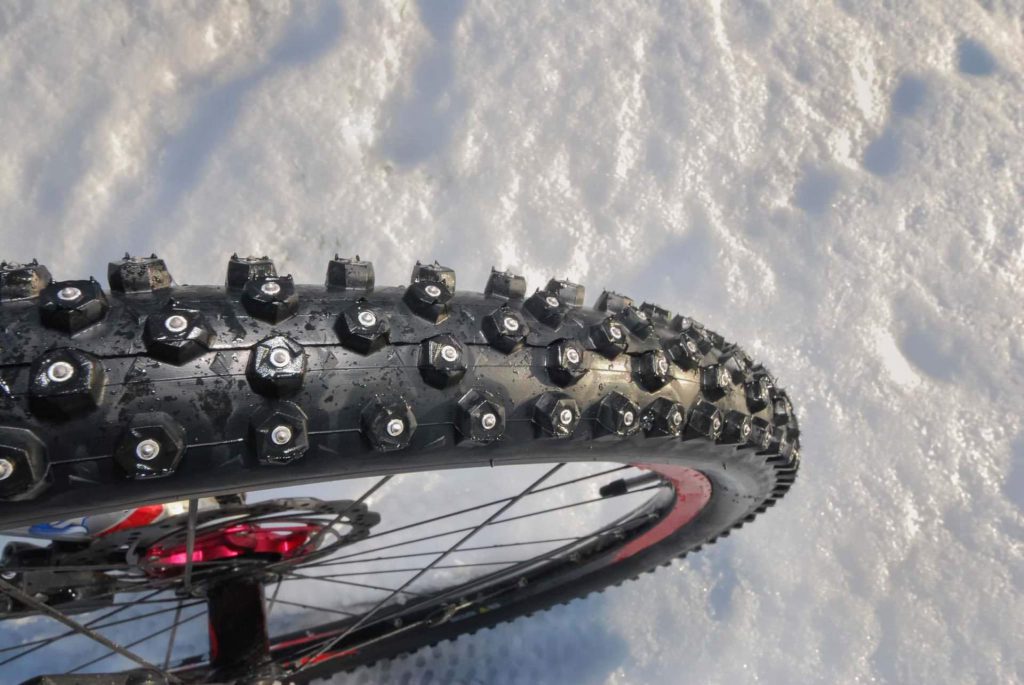
Winterising Your eScooter
Much like other PEV models, our general tips such as silicone gel and tape are also recommended for winterizing eScooters. Likewise, we also advise choosing an eScooter model with a minimum IP54 waterproof rating. Ensure that the motor (usually located in the wheel) is not exposed during use.
Very few eScooter models are actually designed for strenuous use in harsh conditions. If you won’t be able to store your electric scooter inside, definitely pick a model with a removable battery and store that instead.
With those immediate essentials out of the way, here are a few more ways to winterise your eScooter:
- Treating your tires
If necessary, replacing your standard tires with pneumatic off-road tires offers much greater grip and control when riding in the cold. Alongside this, slightly deflating them gives a bigger footprint and spreads out the tread, further improving off-road functionality. However, we always recommend riding slowly and safely on snow or other slippery surfaces.
-
Via electrazoomscooters.com Ride in small bursts
Riding for a sustained period of time in cold weather can cause serious damage to the internal electrical components. This is especially true for the battery, which is put under serious strain when drawing high amperes in cold conditions. As such, we recommend riding in short and controlled sessions and avoiding putting unnecessary strain on your eScooter.
- Avoid deep snow or submerging the wheels
Many, if not all hub-driven eScooters have their motors fitted within the wheels. Whilst this is fine during normal conditions, sustained exposure to snow above the wheel level could cause damage. As such, ensure that your hub motors and wheels are waterproof, or apply silicone gel for additional protection.
Using an Electric Skateboard in Winter
Regarding the safe use of electric skateboards in winter, we only have one main piece of advice: leave it safely indoors! The average electric skateboard model has components fitted to very compromising locations, such as battery housings on the decks’ undersides. Riding an eBoard in the snow without exposing the battery to extreme cold and even moisture ingress is a serious challenge.

Most electric skateboards really were never made to operate off-road, requiring heavy modifications to do so. Whilst urethane wheels prove useless on the snow, fat-tire equivalents exist for eBoards too. However, we still heavily recommend avoiding off-road riding and remaining on the roads instead, if possible.
Winterising an electric skateboard is difficult and usually only done during DIY builds (learn all about building a DIY eBoard here). Despite this, some all-terrain models (like the ‘Bamboo GTR’) remain available and put up a great fight against harsher elements.
Riding a PEV Safely in Winter
Now for arguably our most important section—riding your PEV safely during winter or on snow. We understand that depending on your location, “winter snow” can mean something very different, especially in places like Norway or Canada!
As such, we suggest only riding your PEV in no more than 6-10 inches of snow. Any more is simply impractical and potentially dangerous to both you and your PEV. With that said, here are a few important things to consider when riding in winter:
-
Via ambmag.com.au Wear the right gear
This is always sound advice, no matter the time of year. Make sure you wear adequate safety gear, such as helmets, gloves and pads. High visibility clothing is also important, as days get darker much earlier during winter months. Wearing warm clothing is also essential for your safety, since it will keep you comfortable and allow you to focus better. An additional poncho acts as a good windbreaker, but make sure it’s not too long.
- Know your route
This is another essential piece of advice all year ‘round—but in winter months, it’s especially vital. Snow can hide ditches, crevices, mounds, tree stumps, and all manner of other hazards. Knowing your route helps avoid accidents and damage to either yourself or your ride; it’s also a good habit for efficient riding.
Read through our ultimate eScooter off-road guide for more information on riding safely.
- Stay sensible
Burnouts and drifts are always fun, but we implore you to know your limits and stay sensible. Maintain a steady speed and always give yourself extra time to slow down or emergency brake; stopping distance is much longer in the snow.
Most of this boils down to common sense. Just go slow and don’t ride out into a sub-zero blizzard with no hope of returning!
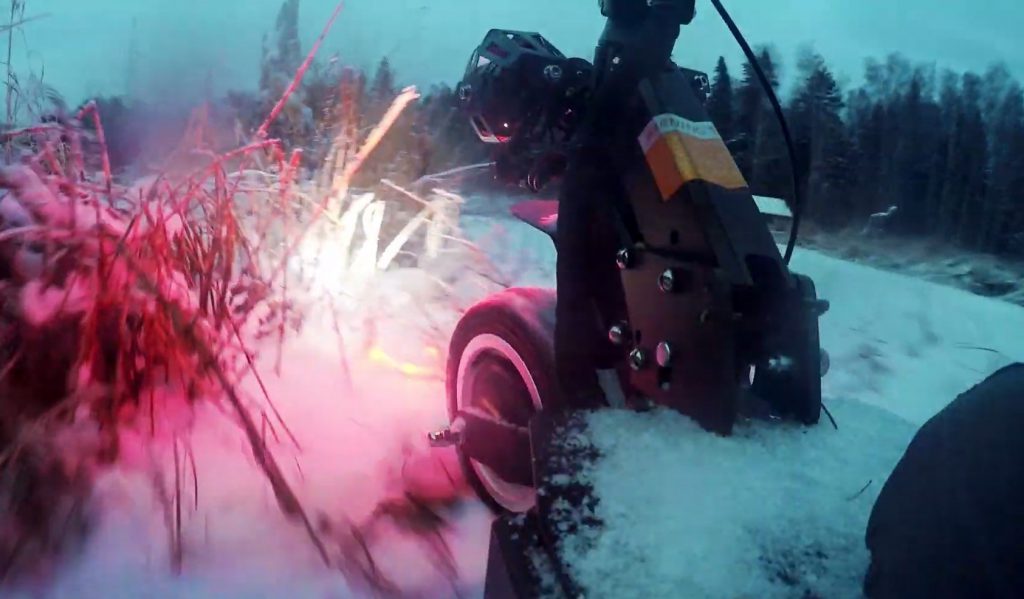
Final Thoughts on Winterizing PEVs
So, those are some of our chosen methods for winterising your PEV and keeping your eBike, eScooter or eBoard running nicely in the cold. Unless you possess a top-end off-road model, we wouldn’t recommend riding a hoverboard or eBoard in the snow. Most off-road hoverboards are designed to handle light snow (fat tires, IP waterproofing, etc.), but we suggest avoiding areas with significant snowfall, usually defined as 6-8 inches or more.
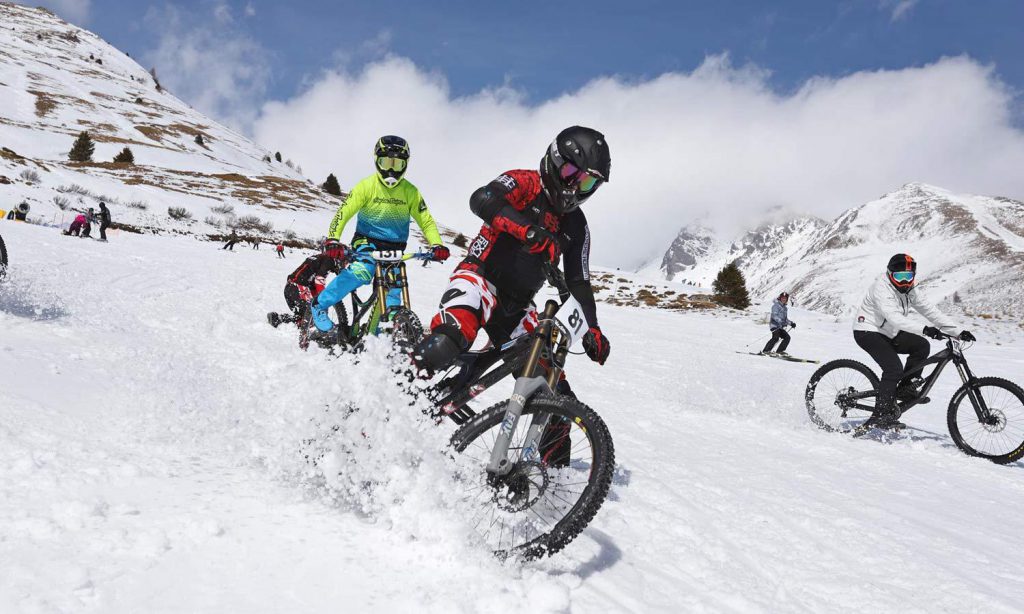
As always, thanks for reading our guide to winterizing your PEV. Let us know what you think or give a suggestion in the comments. Alternatively, check out our PLEV news section for all the latest in electric vehicle developments!
Final note: at below freezing, the readout component of LCD screens remain susceptible to damage, so we also recommend removing the display at extreme temperatures.


